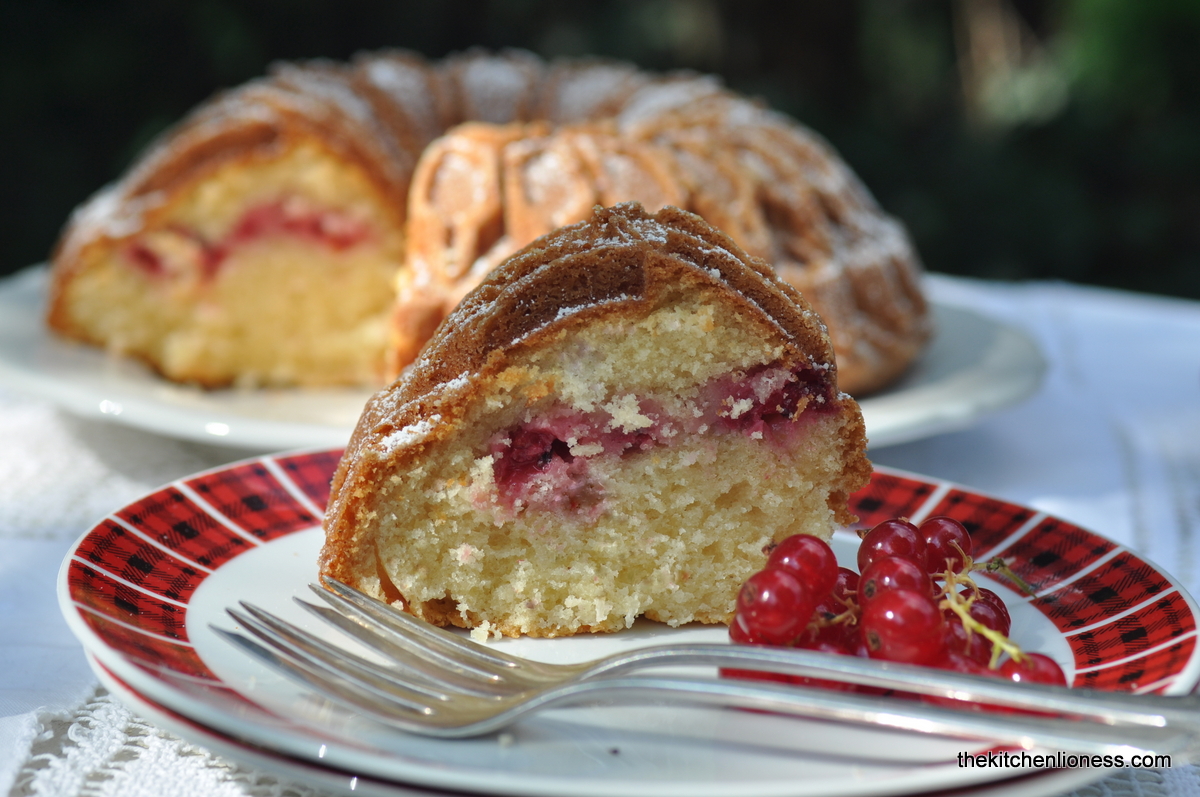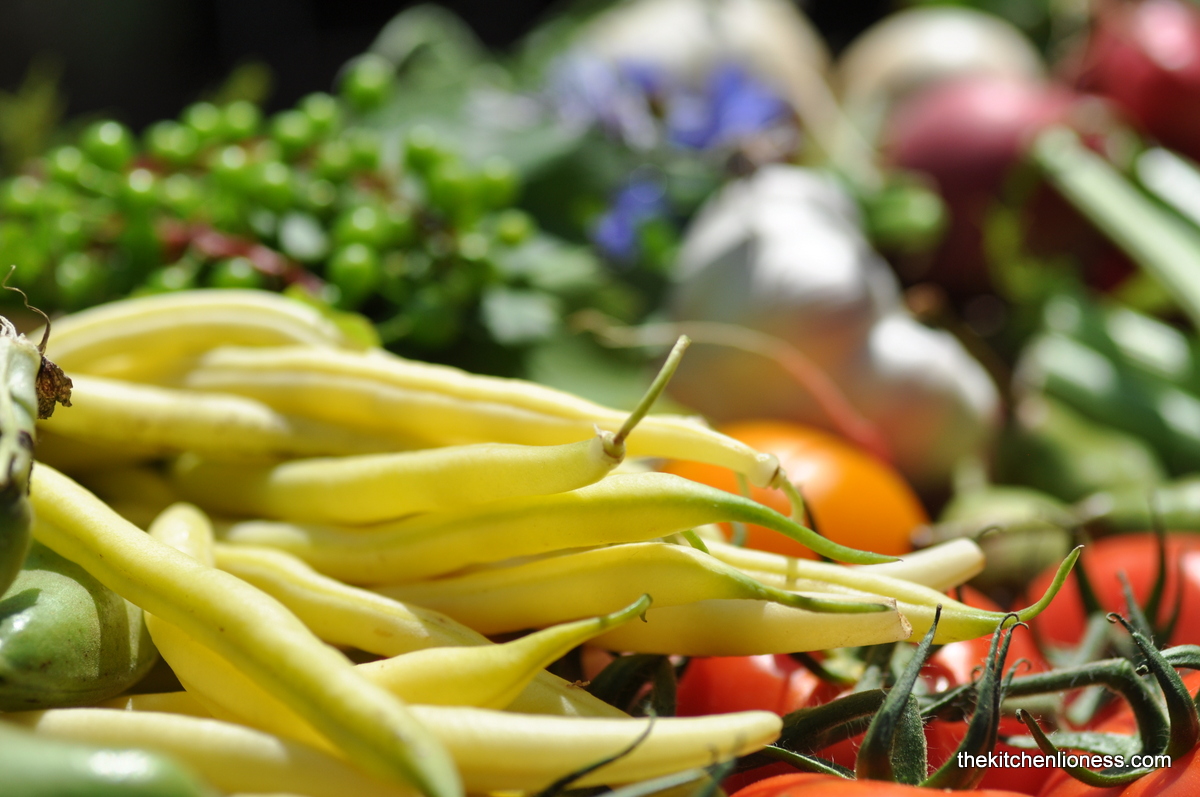At the end of July, summer farmers market season is in full swing and this week I was overjoyed to find loads of redcurrants there. I saw them and made them mine immediately. These are berries of which I have very fond memories. In my grandma´s garden in the Northern part of Germany, where I spent all my summer vacations, there were a lot of redcurrant bushes. And year after year, they provided a magnificent yield of delightfully tart, intensely flavored and gloriously colored redcurrants. Back then, there never seemed to be any question about us not being able to eat as many as we could manage.
The usual answer when I come across an abundance of redcurrants, is to get them home, give them a thorough rinse under cold water and then munch away. And there is simply nothing better than being able to stash away a few jars of homemade redcurrant jelly for when the weather gets colder and we yearn for those tastes of summer. And I love to serve them alongside my deep dark chocolate cookies or my Dutch Boeterkoek (here), their tartness offsets beautifully the indulgent sweet, buttery goodness of that traditional Dutch teatime treat.
But this time, something else was called for. What about something everyone likes, a slighty tangy, coconutty bundt cake with added redcurrants. The great thing about a bundt is that you don’t have to put in much work to end up with a fabulous looking (and tasting) cake. Just pull out one of your favorite bundt pans (or any other gugelhupf pan you might have – just beware of the capacity) prepare an easy cake batter, toss in some lovely seasonal berries or fruit of your choice, and you will end up with a wonderful teatime treat.
Redcurrants work well here in my recipe as they not only taste great when baked but also look attractive when presented on a cake plate. However, equally delicious results will no doubt be achieved with blueberries, strawberries or gooseberries when they are in season.
In my version, as redcurrant flavor is a little tart, I didn’t go with an all natural jogurt but chose a lightly sweetened coconut yogurt instead. I added unsweetened shredded coconut to the batter but if you feel that your redcurrants are extra tart, feel free to sub sweetened shredded coconut to your cake batter. The result was pretty delicious. The coconut yogurt added just enough sweetness here so the bundt does not become sweet, but keeps a little kick of tartness from the redcurrants, which is something that I very much like when eating this sort of cake. Then there is a little added vanilla but you can also sub organic lemon, lime, or orange zest here which also pairs beautifully with coconut. Overall, this recipe is a wonderful combinaton of color, fragrance, flavors and lightness. Fitting for afternoon tea, picnic or even breakfast.
Coconut Yogurt Bundt with Redcurrants
(Author: TheKitchenLioness)
Ingredients
(my recipe is for a 2.1 liter or 9-cup capacity bundt pan)
- 180g unsalted butter, softened
- 270g superfine (caster) baking sugar
- 3 eggs (L), free-range or organic
- the scraped seeds of ½ vanilla bean OR use 1 ½ tsps pure vanilla sugar
- 270g all purpose (plain) flour, sifted, plus some for the pan
- 50g unsweetened, shredded coconut, organic if possible (while the organic coconut it is a bit more pricey, it is far superior in taste)
- 1 ½ tsp baking powder
- a generous pinch of fine sea salt
- 150g natural coconut yogurt (use whichever is your favorite)
- about 50g redcurrants, washed, dried well and taken off their stalks
- icing sugar, optional (for dusting the cake)
Preparation
- Grease and flour a 2.1 liter (9 cup) fluted bundt or gugelhupf pan.
- Preheat your oven to 180° C (160°C fan-assisted) / 356° F.
- Put the butter and sugar into a bowl and beat well using an electric mixer until the mixture is very light and fluffy.
- Add the eggs a little at a time, beating well between each addition.
- Add a little flour if the mixture starts to separate.
- Add the scraped vanilla seeds. Mix.
- Whisk together the flour, baking powder, shredded coconut, and salt and stir half into the butter mixture together with half the coconut yogurt. Mix well.
- Add the remaining flour and yogurt and mix well.
- Spoon a third of the batter into the prepared pan.
- Add the prepared redcurrants, then top with the remaining two thirds of the batter. Level the batter.
- Bake in the oven for 55 to 65 minutes or until golden brown and a wooden skewer instered in the middle of the cake comes out with only dry crumbs attached and the cake starts to pull away from the side of the baking pan.
- When cooked remove the cake from the oven and leave to cool in the bundt pan for 5 to 10 minutes.
- Turn the cake out onto a wire rack over a tray (that will help lessen any mess from the final dusting of icing sugar once the cake is completely cooled).
- Leave until completely cold before serving.
- Dust with icing sugar and serve additional redcurrants alongside. NOTE: To prepare redcurrants, wash, dry on paper towels or kitchen towels, then, holding the stalk over a bowl, grip it at one end and sweep a fork down its length, making sure that the stalk runs between the fork's tines - all the berries should pop off. If you like, you can also remove the little brown tip at the base of each berry (just pinch it off between thumb and forefinger) but I never do because flavor-wise it does not really make any difference.
The bundt pan I used for my recipe is a Nordic Ware Stained Glass Bundt Pan that you can easily find online. It has a 9 Cup capacity – therefore my recipe is designed for a 9-cup capacity bundt pan but feel free to halve it and use a smaller bundt pan.
This is a really great and really easy cake. Quick to make, and easy to play around with the type of fruit or berries you use to suit what you like. Surely worth trying.
















































